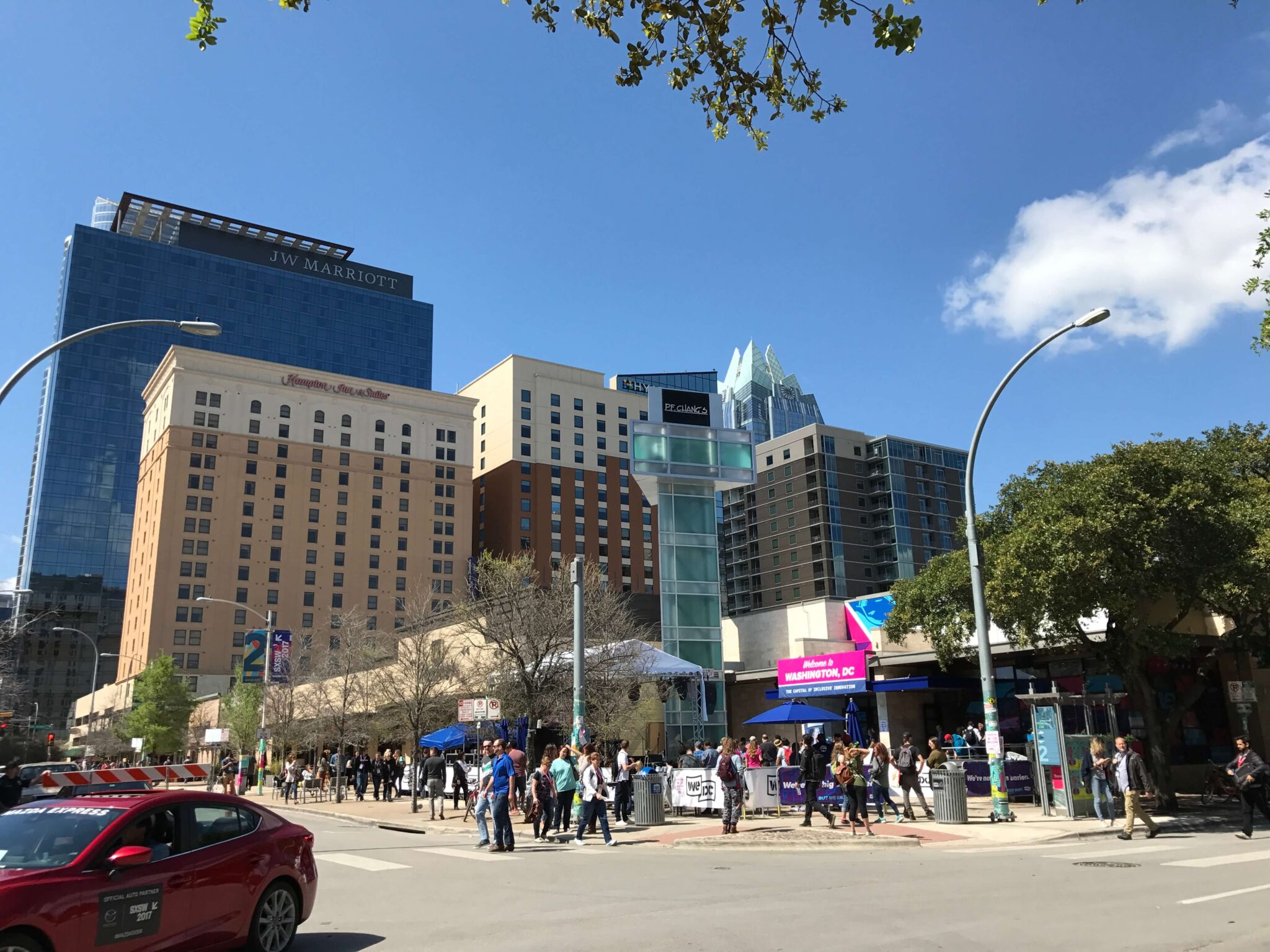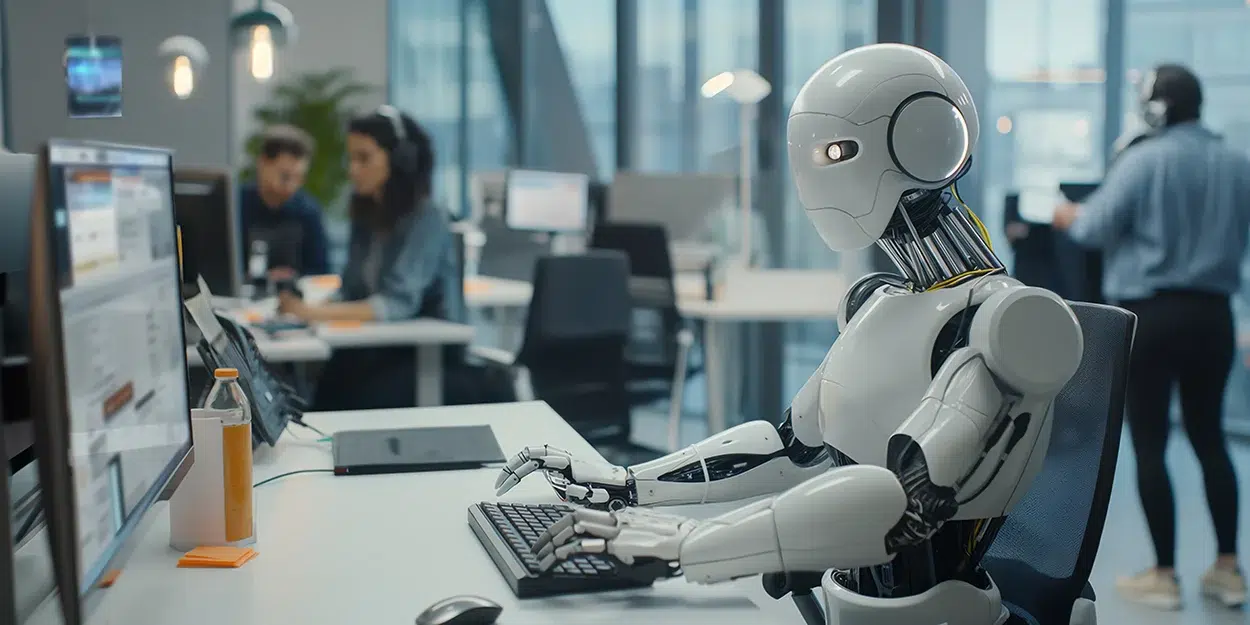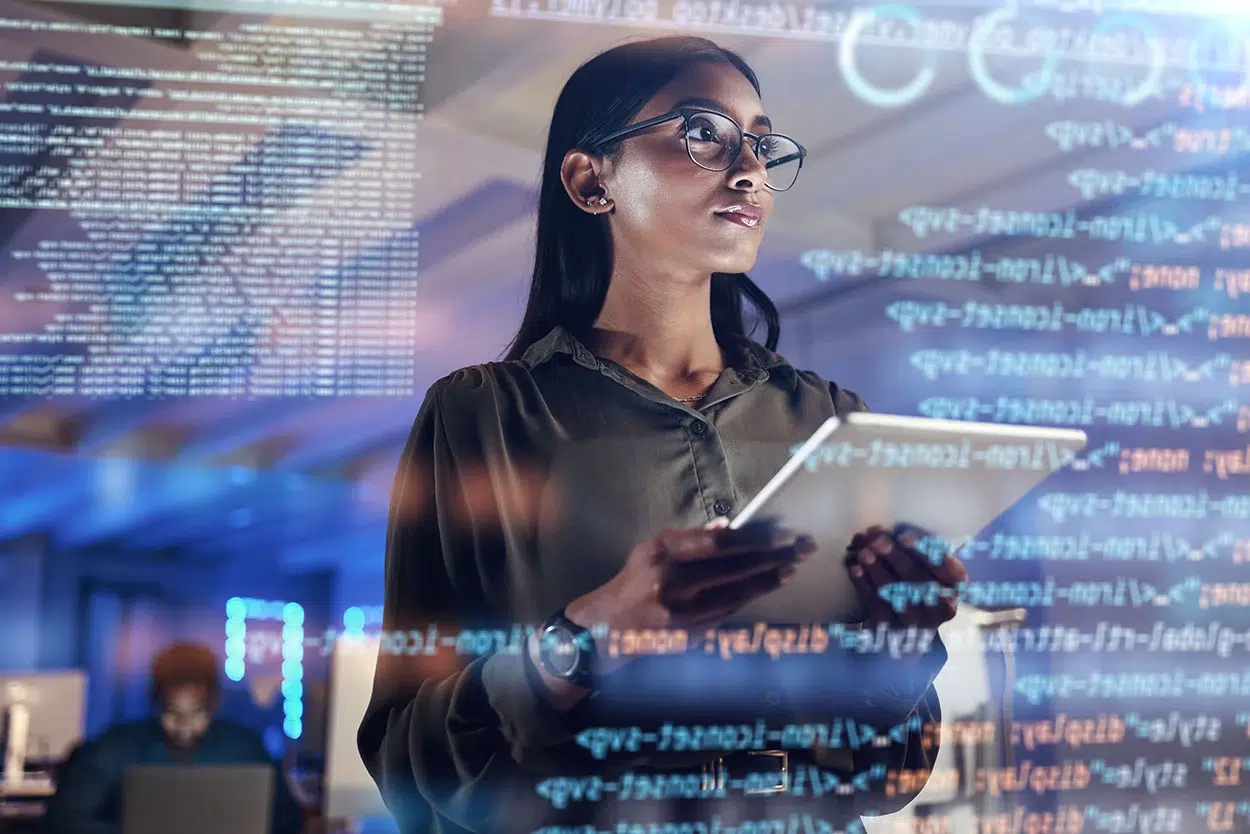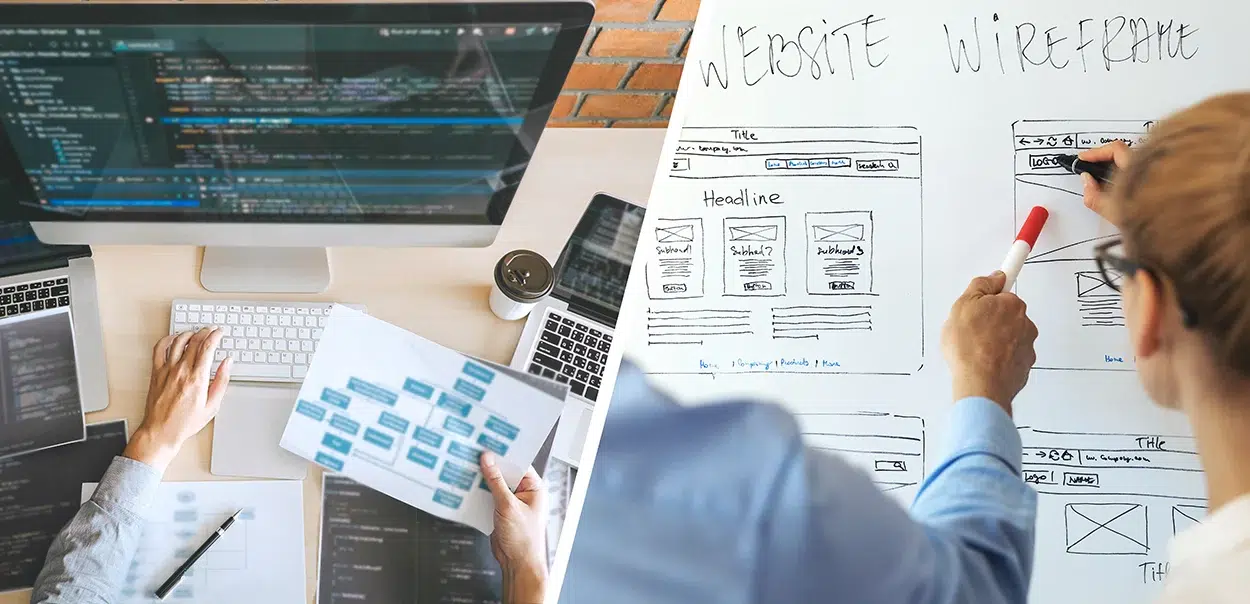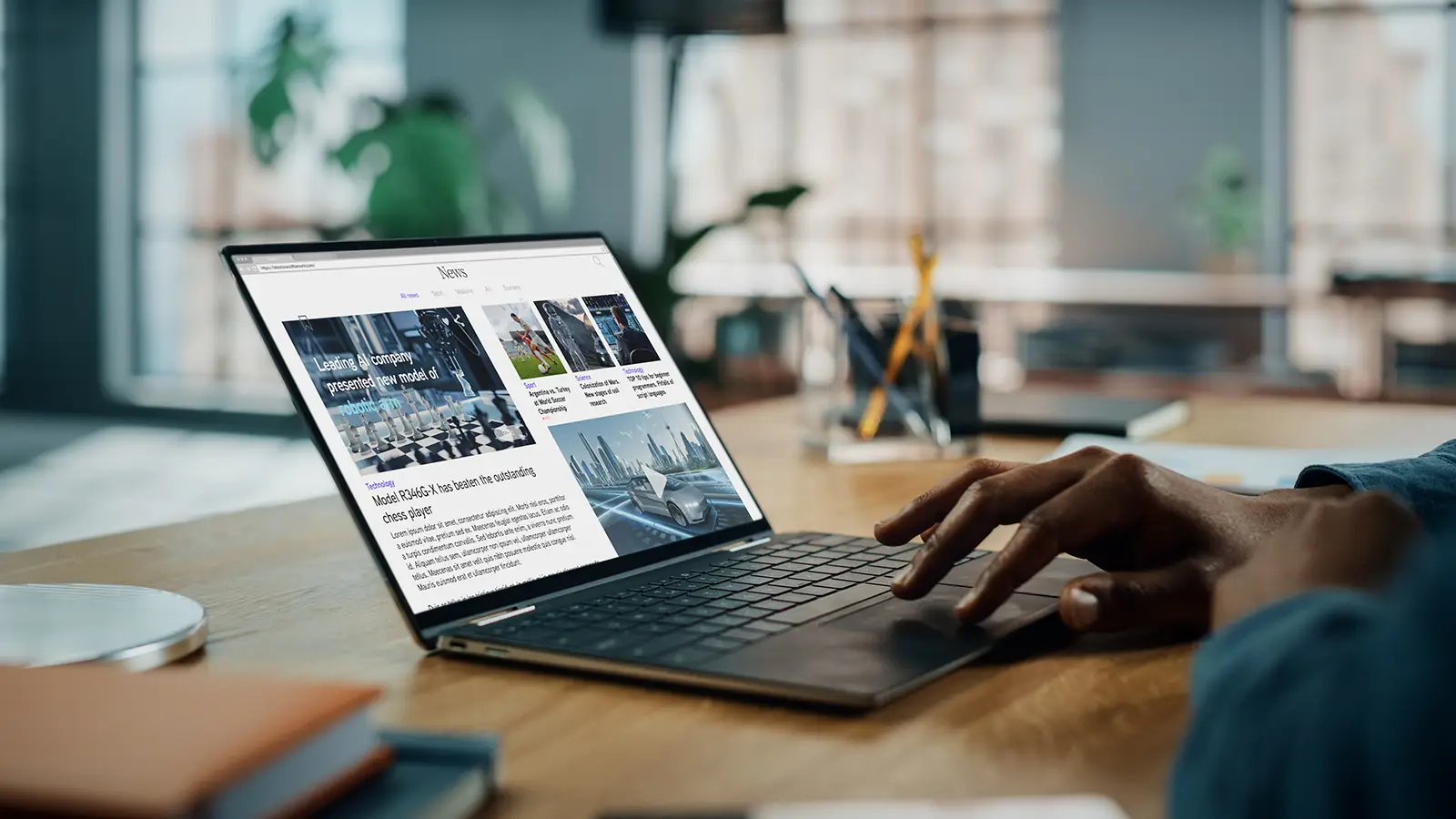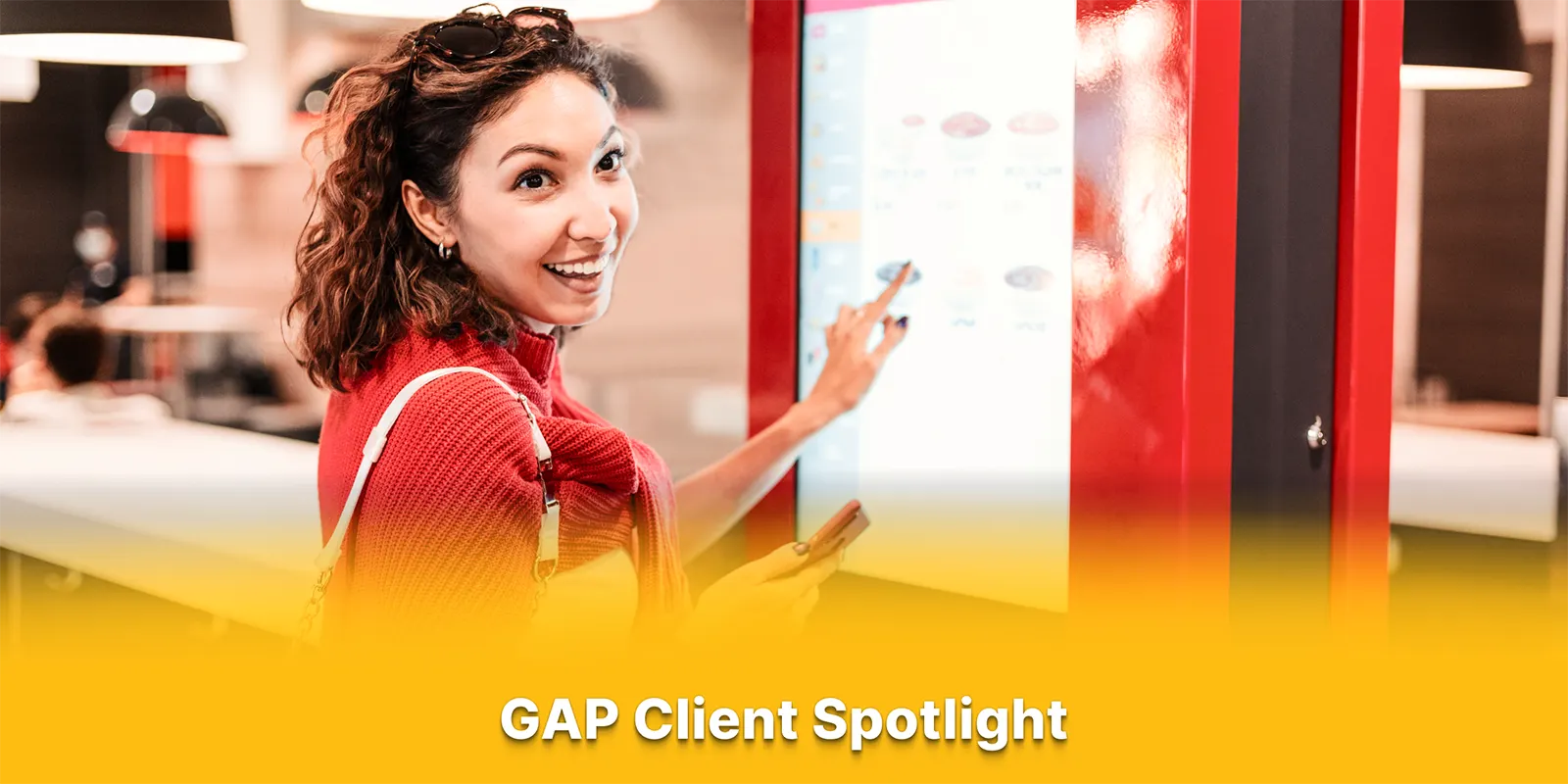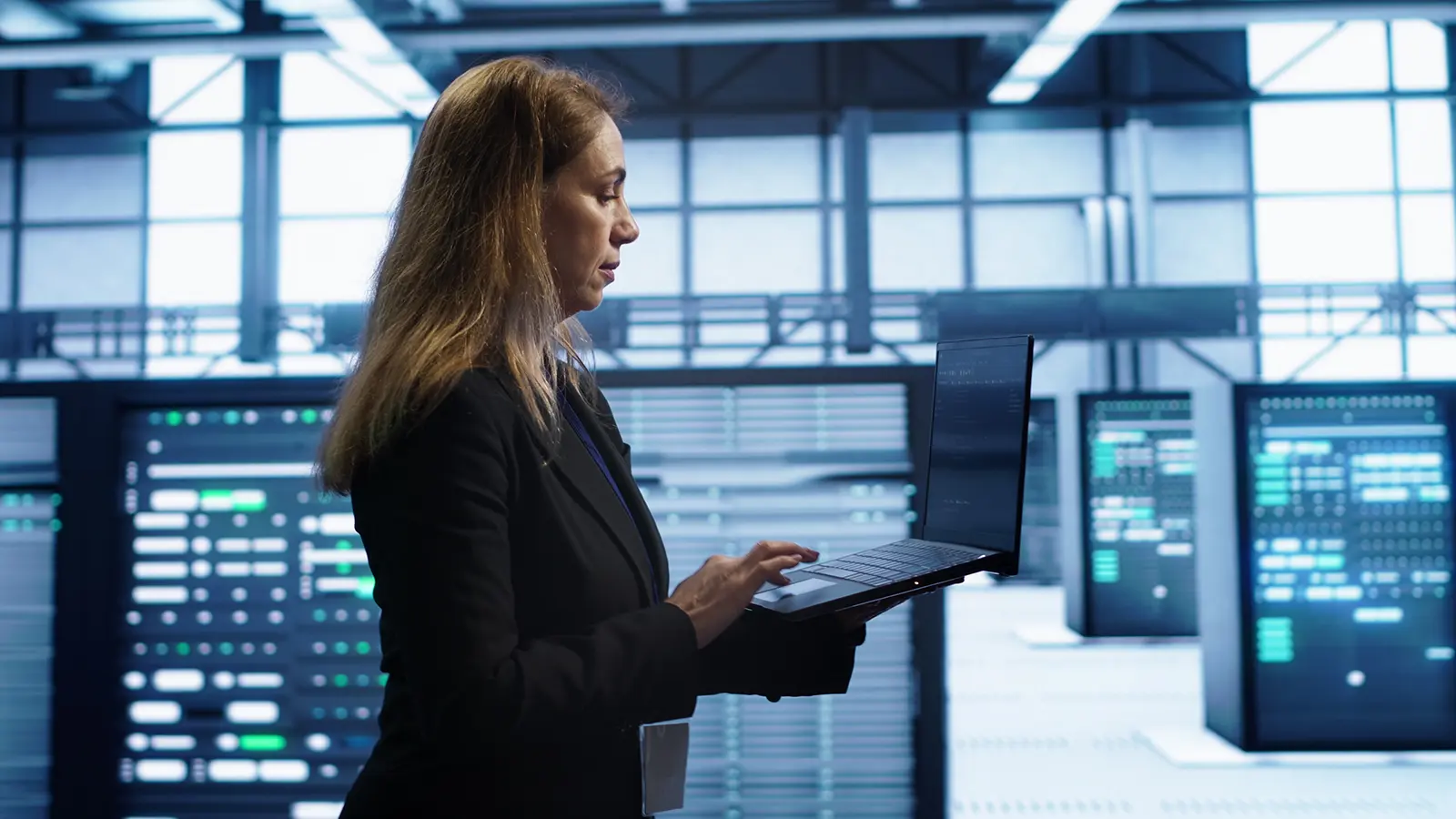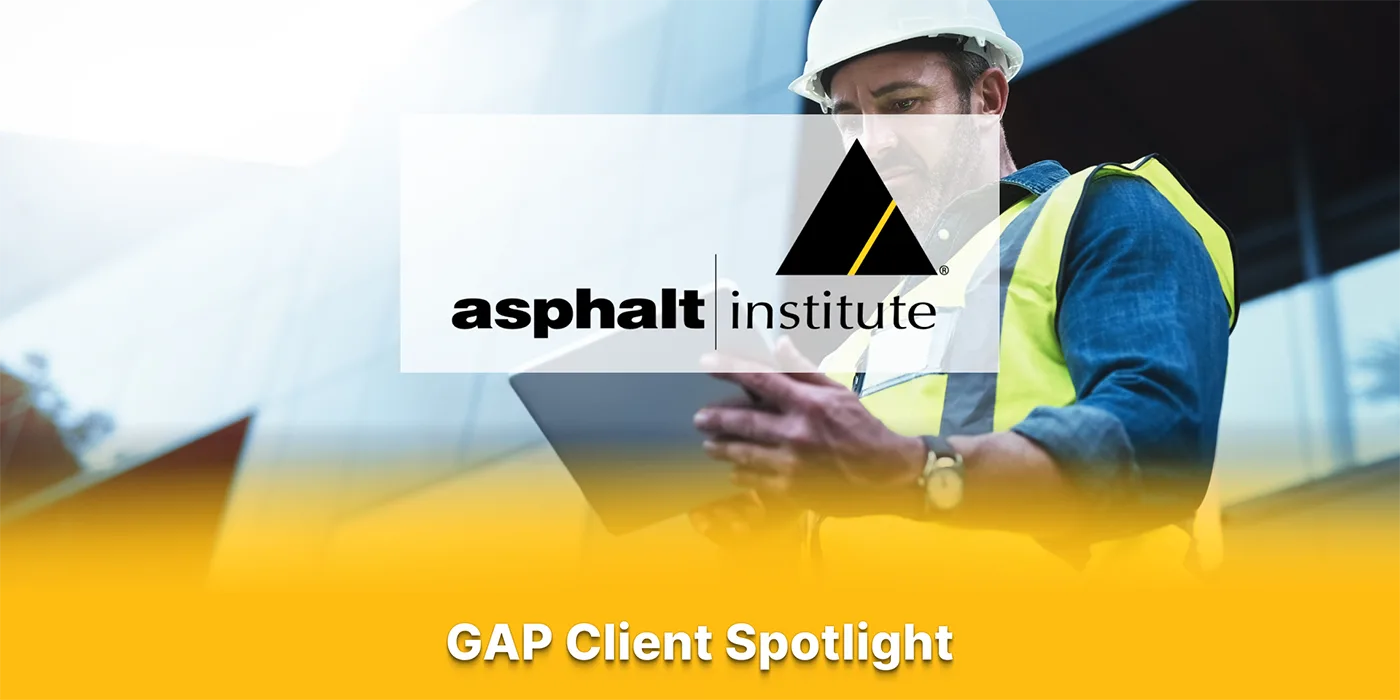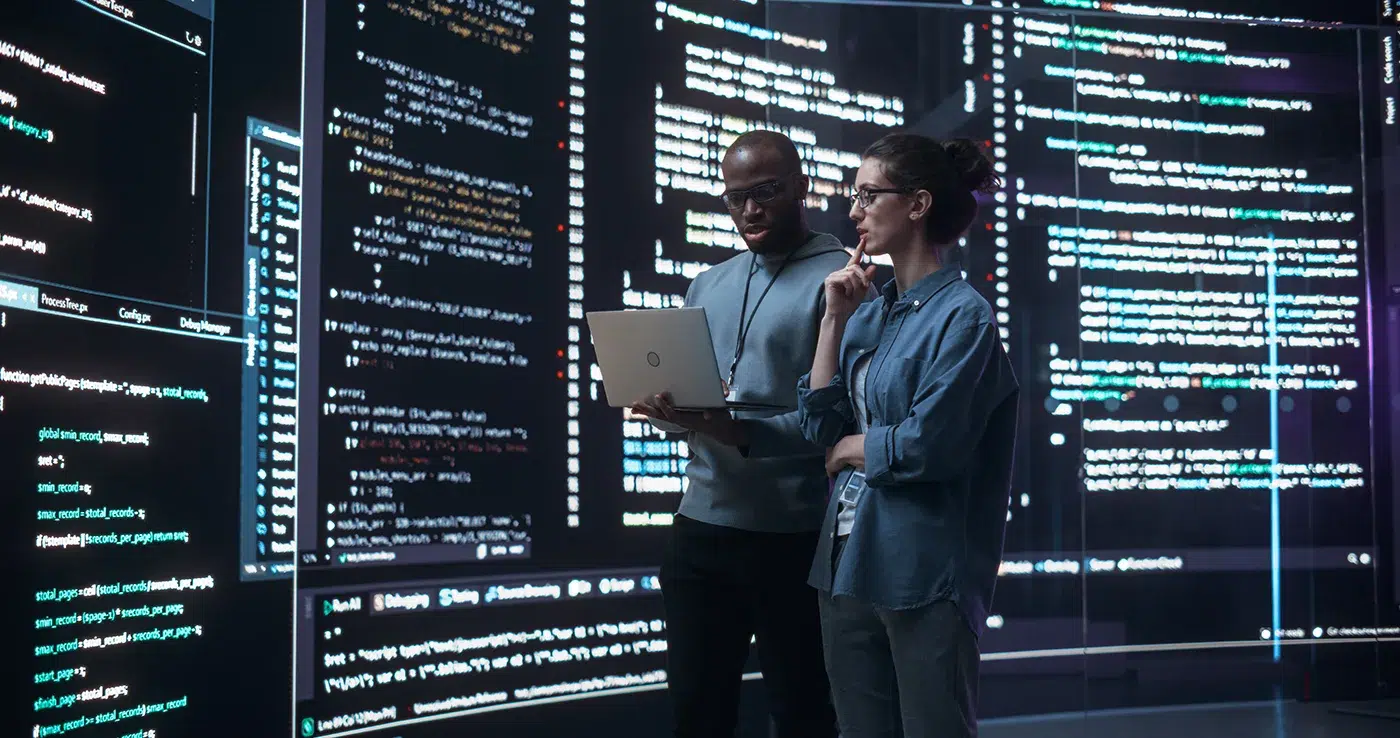Check out the key tech insights from the conference: cognitive tech, data policy, and diversity take the stage
It’s been a little over a week since the Mission Data team returned from SXSW, the annual mecca for innovators in tech, music, and film. We met with clients and partners, squeezed into capacity-crowd discussions, and drank spicy cocktails.
While some members of our team were attending the conference for the first time, it wasn’t the first rodeo for team members Cindi Ramm and Todd Budnikas. We asked them to fill us in on all the big ideas worth writing home about.
You’re all SXSW veterans by now. How did this year’s event compare to years past? Did you approach the conference any differently, based on what you learned from years before?
Todd: This conference has continued to grow year after year to the point where it’s an entirely different beast than it was six years ago. Lines are very long, venues are scattered, and you always need to have a Plan B to account for when things don’t work out (which they inevitably won’t). My approach this year was day-by-day. In years past I’ve done lots of planning which is strenuous and overwhelming. I opted this year to plan out my next day’s morning the night before and my afternoon the morning of. I think this made things more enjoyable for me.
Cindi: My approach was similar to what Todd described above: planning day-by-day, the evening before. After reviewing the sessions and starring my favorites, I would look at the venues and make selections that were either all at one location or at least close to each other to avoid losing time traveling from venue to venue. I also attended more Film sessions this year than in the past, and I found the combination of Film and Interactive sessions to be a good, thought-provoking mix.

How much did the current political climate factor into the conference?
Todd: There were plenty of talks that had a focus on or integrated some form of political angle. I didn’t attend any of them as the titles all seemed fairly sensationalized and possibly just an attempt to get the talk accepted because timing was right and you can play on people’s emotions. My general thought is we haven’t been exposed to the current administration long enough to listen to guidance from someone on “The State of the Open Internet In the Age of Trump.”
I did attend “The Future of Warfare,” however, and found it interesting to hear directly from the mouth of Will Roper, the director of the Pentagon’s Strategic Capabilities Office. He was insightful and explained that he was taking the stage so that he could explain some of what the Pentagon is doing in order to teach others to not be so secretive and to start a dialogue. It seemed like an odd angle since he admitted that the majority of what they are working on is still locked behind closed doors.
Cindi: There were about 40 events that had some sort of focus on the new president whether it be politics, innovation, media, jobs, investing—it seems all angles were covered. One session that I attended related to this was “Covering POTUS: A Conversation with the Failing NYT.” The New York Times executive editor, Dean Baquet, and media columnist Jim Rutenberg discussed how they plan to deal with the new landscape. Baquet noted it’s more important to cover stories that are false and call them out as false than ignore them and not report on it. He said the next two years will be historic in journalism, which very much aligns with another session I attempted to attend, “Our Bright, Jobless Future: Trump Policy vs AI” with Jeff Howe. He was Skyping in and had some technical difficulties, so I didn’t stay.
Another session I attended was a panel with Mark Cuban, “Is Government Disrupting Disruption?” Cuban predicts, “We will see more technological advances over the next 10 years than we have over the last 30. It’s just going to blow everything away.” He predicts low skilled jobs will disappear, being replaced with automation and robots; critical thinking will continue to grow in importance; and that the current administration will not be able to solve the problem by bringing back factories.

Were there any breakthrough concepts, products, or companies that impressed you?
Cindi: Hands down the best product demo I saw was presented during a session by Intel—“AI: How Tech’s Next Revolution Will Change Lives.” In this session, Intel brought in several people to showcase projects leveraging Intel’s platform from sports, the arts, agriculture/farming, and finance. Clinc has developed “Finie,” the Siri of personal banking. What I found to be remarkable is the level of understanding of natural language and the information presented. For a similar demo, go to Clinc.com and scroll down to ‘Watch it Live.’
Todd: There were probably some amazing VR concepts and content, but I didn’t get into any of that. Wearing a headset after countless others have with who knows what airborne illness is not the key to a successful SXSW. We’ve become accustomed to the term SouthbySARS (SXSARS) which reminds us that one must take precautions.
At Mission Data, we’ve been focusing on frictionless customer and employee experiences. Did you see anything fitting into that theme?
Todd: One of the best talks I attended, “Applying Science to Conversational UX Design”, was particularly focused on a frictionless customer experience. Two people from IBM showcased the Watson Conversation service and gave some great insights on how to interact with people in an incredibly natural way. Some of the use cases they explored included interacting with service providers. Read more information here.
Cindi: I’d say Finie (described above) falls in that category. And when they make Finie available on Alexa, it will be a step closer to the masses.

What were some of the best sessions you attended?
Todd: As mentioned, the “Applying Science to Conversational UX Design” was probably at the top of my list. The content was great and it was really interesting to see how companies like IBM sweat the details to create wonderful experiences. It makes you start to see how you can apply those principles to other things as well. Beyond that, and completely unrelated to my job, “A conversation with Nick Offerman” (hosted by Nick Kroll) was a highlight for sure. In fact, I spent the first part of a day in a room that touched on film with a keynote and two conversations that were a really nice change of pace. I always like to mix things up a bit to fight off mental fatigue.
Cindi: So many good sessions this year. One that really stuck with me was the film keynote by Jill Soloway, writer for “Six Feet Under” and creator of “Transparent.” She conducted a ‘thought experiment,’ asking the men in the room to stand up and view images of women dominating culture and history. Later in the session, she had women stand and showed images of what it might feel like to live in a matriarchal society: “You invented everything, all the presidents look like you, all the judges look like you.” It was an interesting flip of gender norms.
Were there any big themes that overtook discussion this year?
Todd: SXSW admitted that the major theme this year was really AI. There was no shortage of AI discussions, panels, trade show demonstrations, and companies explaining how they are doing it and how it will change the future. I did explore some of this content but didn’t find myself overwhelmed by it. It’s worth mentioning that it’s very much real and many companies are pushing full steam ahead. Real AI isn’t a future concept—we’re already getting started.
Cindi: Improving AI and human interactions was definitely a major theme. As noted above, Intel did a nice job of showing examples of how AI is impacting the arts (tools), sports (predicting the best athletes), finance, and social good. A team from Disney discussed “Using AI & Machine Learning to Extend the Disney Magic,” which explored ways of fusing creative and tech to bring the characters closer to the guests.
Another theme was the future of work. In “You’re Not the Boss of Me! How to Manage 1099s,” the term ‘mosaic of labor’ was used to represent a combination of full-time and contract employees. Young people who don’t find the job of their dreams are turning to contracting for more flexibility and no commute. In the session “Growing a Company Without Bosses,” the panel talked about radical responsibility—if you see an opportunity, it’s yours to take.
Diversity and inclusion was another prevalent theme. Many speakers mentioned how they’re often asked, “How do we get more women involved, in directing, in development, in leadership?” Soloway was quick to note that men frequently ask for roles and often exude more confidence than women. In “The Future of Work: How to Innovate with Inclusion,” Candace Morgan of Pinterest talked about the importance of role models that look like you. Lee Daniels’ view: “Racism is real. In America and Hollywood. Raise your own capital. Do your own thing. Nobody owes you anything. You owe yourself something.”
What were some of the biggest takeaways that might have a real-life impact on your work and your view of the industry?
Todd: As we enter the Fourth Industrial Revolution, there are new challenges and considerations. Data privacy and security are of increasing importance. Our interactions with the virtual world are growing in frequency and complexity and there are now so many options for your next VR headset, your next IoT solution, your next chatbot or AI engine. How do you ensure that the company you choose has your privacy in mind? How do you know they’re going to be around in a year when you still need them? How do you trust the company that will buy them and own all of your data?
Additionally, I heard a lot of companies talking about partnership. Companies like GE are partnering with entrepreneurs to make things happen. Companies specialize in certain areas and leverage what they are best at. It’s important to find other companies who can complement your skills to create powerful solutions that change the world.
Cindi: With the proliferation of IoT devices, what happens when a company decides to stop supporting a tool/thing you have purchased? We own things, but not the software supporting the thing. “The Internet of Things You Don’t Own” was an eye-opener for me and highlighted the many states with right to repair legislation that covers electronics, cars, and tractors. There is a push to make replacement parts and instruction manuals available for those qualified to make repairs. It’s easy to see the concerns about giving people access to software who know nothing about software. One example cited was about a farmer who purchased a $250,000 tractor that has software controlling seed distribution. When the farmer phoned the manufacturer and asked for a adjustment so that the seeds would be distributed as needed, it took 6-12 months for the manufacturer to send an engineer to make the fix. There was a call to action to talk to Congress about companies that tell us we don’t own the things we buy.
Ok, now tell us about the food and drinks. Any parties or music worth mentioning?
Cindi: My favorite drink was at the Iron Cactus—the Pineapple-Jalapeno Iron Mule; refreshing with a little kick. Credit goes to Todd for ordering it first.
Todd: Agree with Cindi on the Pineapple-Jalepeno Iron Mule at Iron Cactus. Always a fan of The Ginger Man and their plethora of taps. Starting last year, Bangers has become a favorite of mine: great food, great atmosphere, and good drinks. I love the general Rainey Street area that has really blossomed in the past year. As far as parties, we didn’t hit up too much this year. I had a lot of fun at Mashable’s MashBash and loved seeing one of my favorite bands, PENNYWISE, play the Interactive closing party hosted by Media Temple at Stubb’s BBQ.
